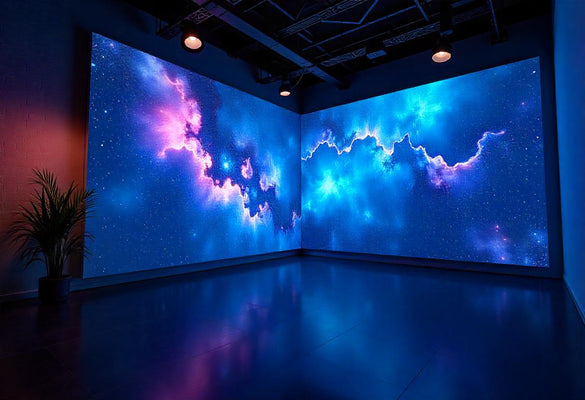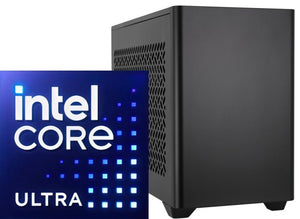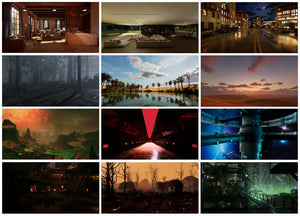LED Wall Cost Analysis for Small Businesses

Small businesses entering the world of virtual production face numerous financial decisions, with LED wall cost being one of the most significant investments. Modern LED walls have transformed from luxury items reserved for major studios into accessible tools that can elevate small business productions to Hollywood-level quality.
The shift toward LED-based virtual production has created new opportunities for independent filmmakers, marketing agencies, and educational institutions. Understanding the true cost structure of LED walls helps small businesses make informed decisions about integrating this technology into their operations.
Breaking Down LED Wall Pricing: What Small Businesses Need to Know
LED screen pricing varies dramatically based on several key factors that directly impact your investment decision. The market offers solutions ranging from basic setups suitable for small productions to sophisticated systems that rival major studio installations.
Pixel Pitch and Resolution Impact The pixel pitch – the distance between LED pixels – significantly affects both image quality and cost. Smaller pixel pitches (1.2mm to 2.5mm) provide superior image quality but command premium prices. For small businesses, 2.5mm to 3.9mm pixel pitch options often provide the optimal balance between quality and affordability.
Panel Size and Configuration Flexibility Standard LED panels typically measure 500mm x 500mm or 500mm x 1000mm, with costs varying based on manufacturer and specifications. Small businesses can start with modest configurations and expand their setups over time, making LED walls more accessible than previously imagined.
Processing and Control Systems LED walls require sophisticated processing equipment to manage content delivery and color calibration. These control systems represent 15-25% of total system costs but are essential for achieving professional results.

Small Business LED Wall Investment: Realistic Budget Planning
Creating a realistic virtual production budget requires understanding both upfront costs and ongoing operational expenses. Small businesses typically invest between $50,000 to $200,000 for complete LED wall systems, depending on size and specification requirements.
Entry-Level Systems ($50,000 - $80,000) Basic LED wall setups suitable for interview backgrounds, product demonstrations, and simple virtual sets. These systems typically include:
-
10-20 LED panels (2.5mm-3.9mm pixel pitch)
-
Basic processing equipment
-
Mounting hardware and basic rigging
-
Initial installation and calibration
Mid-Range Professional Systems ($80,000 - $150,000) These configurations support more complex productions including virtual sets, product launches, and training content:
-
20-40 LED panels with improved pixel density
-
Advanced processing capabilities
-
Professional mounting systems
-
Enhanced color accuracy and brightness
-
Basic tracking integration capabilities
Advanced Small Business Systems ($150,000 - $200,000) Premium setups that approach broadcast quality while remaining budget-conscious:
-
40+ LED panels with superior specifications
-
Broadcast-grade processing equipment
-
Professional mounting and rigging systems
-
Advanced tracking integration
-
Color management and calibration tools
Understanding LED Display Investment ROI for Small Operations
Calculating return on investment for LED display investment requires analyzing both direct revenue opportunities and cost savings compared to traditional production methods.
Revenue Generation Opportunities Small businesses can monetize LED wall investments through various channels:
-
Client production services for local businesses
-
Virtual event hosting and streaming
-
Content creation for social media and marketing
-
Training and educational program development
-
Equipment rental to other small productions
Cost Savings Analysis LED walls eliminate many traditional production expenses:
-
Location rental fees for shoots
-
Travel costs for on-location filming
-
Set construction and teardown time
-
Weather-related production delays
-
Large crew requirements for location management
Operational Efficiency Gains Modern LED walls streamline production workflows:
-
Real-time background changes without post-production
-
Reduced shooting schedules through virtual environments
-
Immediate client approval through live previews
-
Simplified lighting setups with consistent virtual environments

Studio Equipment Costs: LED Walls vs. Traditional Alternatives
Comparing studio equipment costs between LED walls and traditional alternatives reveals surprising value propositions for small businesses. While upfront LED wall investments appear substantial, total cost of ownership often favors virtual production solutions.
Traditional Green Screen Setups Basic green screen studios require:
-
Professional lighting systems ($15,000-$30,000)
-
Green screen materials and rigging ($5,000-$10,000)
-
Post-production software and hardware ($10,000-$25,000)
-
Ongoing rental costs for specialized locations
LED Wall Advantages LED systems provide immediate benefits:
-
Eliminated post-production keying work
-
Real-time client collaboration and approval
-
Consistent lighting conditions regardless of time or weather
-
Multiple virtual environments without additional setup
Long-term Financial Considerations LED walls offer superior long-term value through:
-
Reduced per-project costs after initial investment
-
Multiple revenue stream opportunities
-
Lower operational overhead compared to location-based shooting
-
Increased production capacity within existing space
Production Technology Budget: Planning for Success
Developing a realistic production technology budget requires understanding both obvious and hidden costs associated with LED wall implementation.
Direct Equipment Costs
-
LED panels and mounting hardware
-
Processing and control equipment
-
Cameras and tracking systems
-
Audio equipment and integration
-
Backup and redundancy systems
Installation and Setup Expenses
-
Professional installation services
-
Electrical upgrades and power distribution
-
Structural modifications for mounting
-
Network infrastructure improvements
-
Initial training and calibration
Ongoing Operational Costs
-
Power consumption and utility costs
-
Maintenance contracts and technical support
-
Software licensing and updates
-
Insurance adjustments for equipment value
-
Staff training and certification programs
Financing Options for Small Business LED Wall Purchases
Small businesses have several financing strategies available for LED wall investments, making this technology more accessible than traditional cash purchases might suggest.
Equipment Leasing Programs Many LED wall manufacturers offer leasing options that:
-
Reduce upfront capital requirements
-
Include maintenance and support services
-
Provide upgrade paths to newer technology
-
Offer tax advantages through operational expense treatment
Business Credit and Loan Options Traditional financing approaches include:
-
SBA loans for qualifying small businesses
-
Equipment-specific financing programs
-
Business credit lines for flexible purchasing
-
Partnership arrangements with equipment suppliers
Rent-to-Own and Trial Programs Progressive purchase options allow businesses to:
-
Test technology before full commitment
-
Generate revenue while evaluating systems
-
Apply rental payments toward eventual purchase
-
Minimize risk during market entry phases
Implementation Timeline and Setup Considerations
LED wall implementation requires careful planning to minimize business disruption and maximize operational efficiency. Small businesses typically need 4-8 weeks for complete system deployment.
Pre-Installation Planning (2-3 weeks)
-
Site assessment and structural evaluation
-
Electrical and network infrastructure planning
-
Equipment specification and ordering
-
Staff scheduling and training coordination
Installation Phase (1-2 weeks)
-
Equipment delivery and staging
-
Structural mounting and rigging
-
Power distribution and networking
-
Initial system integration and testing
Testing and Optimization (1-2 weeks)
-
Color calibration and brightness adjustment
-
Content workflow development
-
Staff training and certification
-
Client demonstration and approval processes
Go-Live Support (Ongoing)
-
Technical support during initial operations
-
Performance monitoring and optimization
-
Regular maintenance scheduling
-
Expansion planning for future growth

Conclusion
LED wall technology has evolved from expensive studio luxury to practical small business investment. The initial LED wall cost represents a significant commitment, but the long-term benefits of reduced production expenses, increased creative flexibility, and new revenue opportunities make virtual production accessible for forward-thinking small businesses.
Success with LED wall investment requires realistic budget planning, understanding of total cost of ownership, and strategic implementation that aligns with business growth objectives. Small businesses that approach LED wall investment strategically position themselves to compete effectively with larger operations while maintaining operational efficiency and creative control.
The key lies in matching LED wall specifications to actual business needs rather than pursuing maximum technical capabilities. By focusing on practical applications and measurable returns, small businesses can leverage LED screen pricing structures to build sustainable competitive advantages in their respective markets.
Frequently Asked Questions
What is the minimum budget needed for a small business LED wall setup?
Small businesses can establish basic LED wall capabilities with budgets starting around $50,000-$60,000. This includes entry-level LED panels, basic processing equipment, and essential mounting hardware. However, professional-quality systems that support diverse production needs typically require $80,000-$120,000 investments.
How long do LED walls last and what are maintenance costs?
Quality LED walls typically operate effectively for 7-10 years with proper maintenance. Annual maintenance costs generally range from 3-5% of initial system value, covering routine calibration, component replacement, and technical support. Most manufacturers offer comprehensive service contracts that include regular maintenance and emergency support.
Can small businesses finance LED wall purchases?
Yes, multiple financing options exist including equipment leasing, SBA loans, and manufacturer financing programs. Leasing arrangements often require 10-20% down payments with monthly terms ranging from 36-60 months. Many businesses find leasing attractive because it preserves working capital while providing immediate access to current technology.
What additional equipment is needed beyond the LED panels?
LED walls require processing equipment (15-25% of panel costs), mounting hardware, power distribution systems, and control computers. Additional investments include cameras optimized for LED environments, audio equipment, and potentially tracking systems for advanced applications. Total system costs typically run 40-60% higher than panel costs alone.
How much space is required for LED wall installation?
Minimum space requirements depend on LED wall size and intended applications. Basic setups need at least 20x15 feet with 12-14 foot ceilings. Professional installations benefit from 30x20 feet or larger spaces. Adequate ventilation, power distribution, and equipment storage areas are essential considerations beyond the LED wall footprint itself.
What return on investment can small businesses expect?
ROI varies based on utilization and market positioning, but many small businesses achieve 18-24 month payback periods through a combination of cost savings and new revenue streams. Successful implementations typically generate $200-$500 per day in direct revenue while eliminating $100-$300 daily in traditional production costs.
Are LED walls suitable for live streaming and virtual events?
Modern LED walls excel in streaming applications, providing consistent backgrounds without green screen artifacts. They support real-time environment changes, integrate seamlessly with streaming software, and eliminate post-production keying requirements. Many small businesses find virtual event hosting becomes a significant revenue source after LED wall installation.




